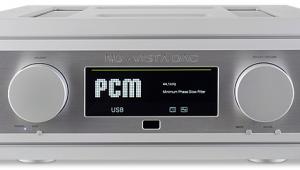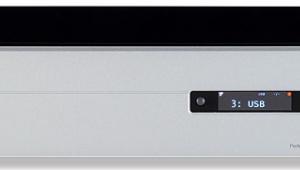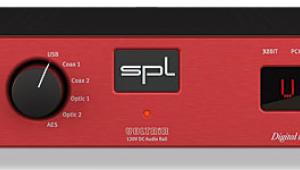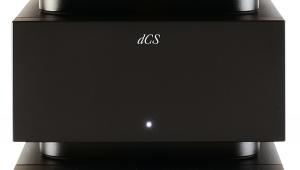Auralic Vega (£2890)

Auralic will be a new name to many readers as only recently has this innovative brand become available to UK audiophiles. Based in Beijing, Auralic calls its Vega a ‘digital processor’.
We’re more likely to call it a digital preamplifier, since it’s a DAC with a (digital) volume control and Class A preamp built in – not merely a high-current DAC output. There are no analogue inputs but neither are there any fixed-level line outs, so to use it simply as a DAC you connect XLR or RCA outputs to your amp and leave the gain set to max.
At the rear are five digital inputs. The AES/EBU (XLR) and three S/PDIF inputs (two electrical via RCA, one optical via Toslink) will handle LPCM up to 24-bit/192kHz, while its asynchronous USB input will accept incoming data all the way up to 32-bit/384kHz. As well as being compatible with 1-bit/2.8224MHz DSD (DSD64) the USB input will also handle double-rate DSD with a 5.6448MHz sampling frequency. Such a specification represents the current state-of-the-art in consumer audio gear.
The Vega’s chic-looking casework is made from an internally coated alloy. Auralic claims this makes protects the electronics within from vibration and electromagnetic interference. The minimalist alloy fascia, with just a rotary knob on the right, is dominated by a large active-matrix organic LED display that’s really gorgeous!
Pushing in and releasing the knob brings the DAC out of standby, while pressing it again enables its ample configuration menu. Under its bonnet the DSP upsamples all incoming data to 32-bit/1.5MHz and also controls the Auralic’s XMOS-based USB interface, buffering data to minimise jitter. The DSP also provides myriad digital filter options.
Smooth and creamy
We found the Vega’s sound quality enchanting and immersive. Its designers appear to have erred towards a slightly ‘warm’ and opulent sound character that allows for extended listening without fatigue. Detail is plentiful but rarely is it thrown in your face.
One could fill a book describing the subtle variations in presentation offered by the Vega’s digital filter options. We generally found the DAC’s Mode 2 setting preferable when playing CD quality files, especially with well-balanced recordings – perhaps because its group of filters offers the flattest frequency response. With harder-edged recordings we tended to favour the Mode 4 setting.
Listening to the album Hidden Colours by the David Rees-Williams Trio [DePaean Records] revealed how smooth and creamy the Vega can sound. The best track on the album is the sublime ‘When I Am Laid In Earth’ from Purcell’s Dido And Aeneas. The acoustic bass sounded rich and full-bodied, with good transient attack to the plucked notes without appearing over-etched. The piano remained bold and powerful throughout.
Moving on to some more adventurous jazz we listened to several tracks from the CD version of Carlos Franzetti’s The Jazz Kamerata [Chesky]. This is a beautiful recording, with plenty of space around the jazz ensemble that allowed the Vega to paint wonderful images of the musicians working in harmony. Again, the sound was richly textured and the tone colours vibrant, the strings and woodwinds accompanying the piano, saxophone, bass and drums depicted exquisitely across the wide and deep soundstage.
We spent countless hours listening to hi-res downloads from 2L and Channel Classics, including DXD (24-bit/352.8kHz PCM) master files and native DSD recordings. However, we must say we were largely underwhelmed by the sound of DSD files delivered via DoP. Sure, there’s a pleasing warmth and ‘ease’ to the sound but, to us, high sampling-rate PCM appears more lifelike. Nevertheless, Auralic is to be applauded for enabling its Vega to handle all formats, ensuring it to be a future-proof investment.
Verdict
There’s a natural ease to the Vega’s music making, yet it’s not too smooth-sounding to rob the music of vitality. Its feature set is also in the top drawer for 2014, making it an outstanding proposition for anyone looking for a top quality DAC/preamplifier.
Originally published in the 2014 Yearbook

























































